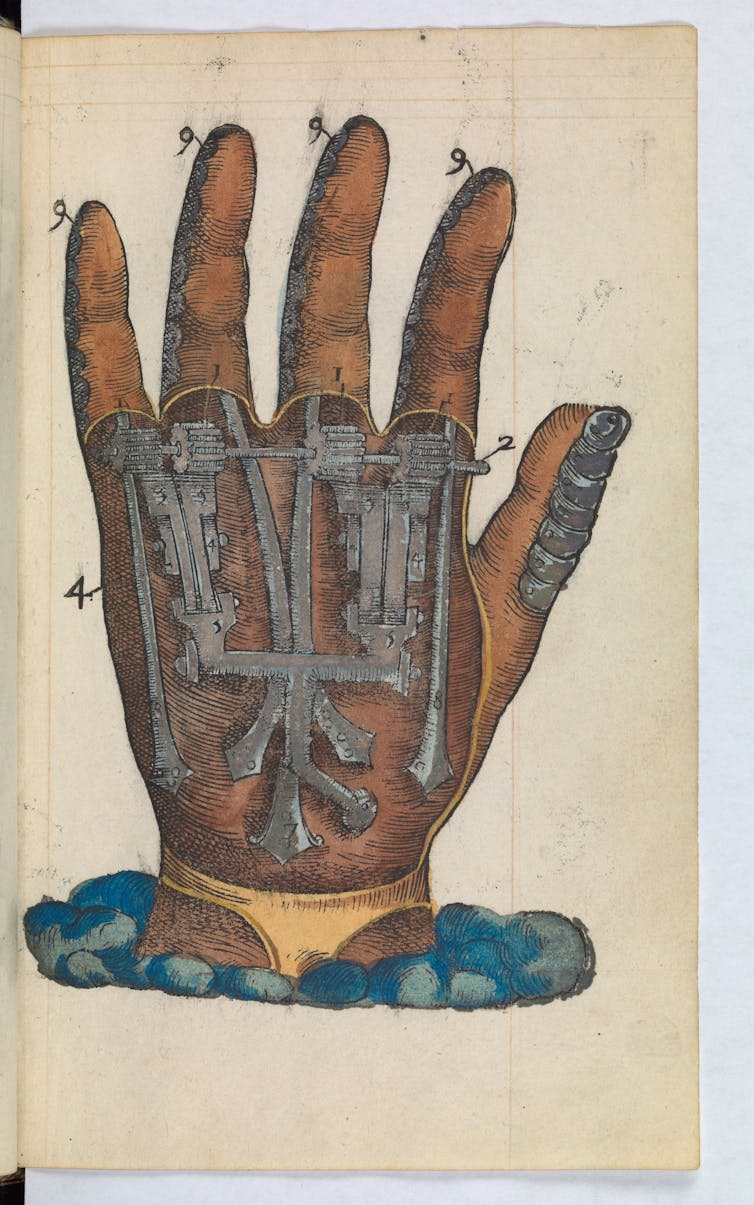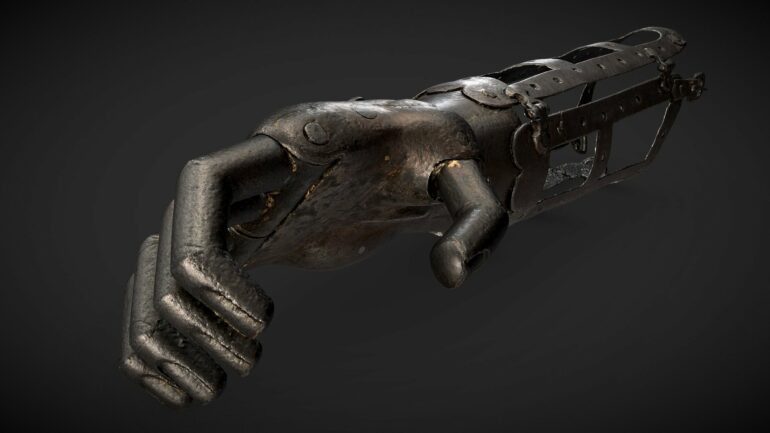The human body today has many replaceable parts, ranging from artificial hearts to myoelectric feet. What makes this possible is not just complicated technology and delicate surgical procedures. It’s also an idea — that humans can and should alter patients’ bodies in supremely difficult and invasive ways.
Where did that idea come from?
Scholars often depict the American Civil War as an early watershed for amputation techniques and artificial limb design. Amputations were the most common operation of the war, and an entire prosthetics industry developed in response. Anyone who has seen a Civil War film or TV show has likely watched at least one scene of a surgeon grimly approaching a wounded soldier with saw in hand. Surgeons performed 60,000 amputations during the war, spending as little as three minutes per limb.
Yet, a momentous change in practices surrounding limb loss started much earlier – in 16th and 17th century Europe.

The surgeon Ambroise Paré printed a Parisian locksmith’s design for a mechanical iron hand in the 16th century.
Instrumenta chyrurgiae et icones anathomicae/Ambroise Paré via Wellcome Collection
As a historian of early modern medicine, I explore how Western attitudes toward surgical and artisanal interventions in the body started transforming around 500 years ago. Europeans went from hesitating to perform amputations and few options for limb prostheses in 1500 to multiple amputation methods and complex iron hands for the affluent by 1700.
Amputation was seen as a last resort because of the high risk of death. But some Europeans started to believe they could use it along with artificial limbs to shape the body. This break from a millennia-long tradition of noninvasive healing still influences modern biomedicine by giving physicians the idea that crossing the physical boundaries of the patient’s body to drastically change it and embed technology into it could be a good thing. A modern hip replacement would be unthinkable without that underlying assumption.
Surgeons, gunpowder and the printing press
Early modern surgeons passionately debated where and how to cut the body to remove fingers, toes, arms and legs in ways medieval surgeons hadn’t. This was partly because they confronted two new developments in the Renaissance: the spread of gunpowder warfare and the printing press.
Surgery was a craft learned through apprenticeship and years of traveling to train under different masters. Topical ointments and minor procedures like setting broken bones, lancing boils and stitching wounds filled surgeons’ day-to-day practice. Because of their danger, major operations like amputations or trepanations – drilling a hole in the skull – were rare.
Widespread use of firearms and artillery strained traditional surgical practices by tearing bodies apart in ways that required immediate amputation. These weapons also created wounds susceptible to infection and…



